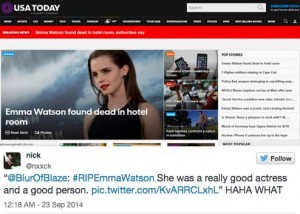By SHAKIRA MOLET
Every year, Ultra Musical Festival invades downtown Miami during the month of March, bringing with it celebrity DJs, crazy parties at South Beach, neon costumes and, of course, electronic/dance music.
But why do news outlets bother covering this three-day musical festival at all? Well let’s look at what else Ultra brings with it other than a good time.
One major complaint residents always have when it comes to Ultra, besides the loud music, is the chaos of downtown traffic. Major streets are blocked off so that Bayfront Park can accommodate the 80,000+ people that attend Ultra, which causes in a drastic increase in traffic for the duration of the festival.
In addition to traffic, Ultra Music Festival also brings safety concerns. Last year, a security guard working at the festival was trampled and was immediately sent to urgent care after receiving severe injuries all over body, especially her head.
 On top of that, many attendees find themselves in need of medical care every year during the festival, resulting in hundreds of fire rescue calls.
On top of that, many attendees find themselves in need of medical care every year during the festival, resulting in hundreds of fire rescue calls.
It is because of this that Miami-Dade and residents made efforts to prohibit Ultra from returning the following year; however, their efforts proved to be a waste of time when a public uproar convinced officials otherwise.
Like it or not, Ultra has been bringing millions of tourism dollars for years. Though it is true that hosting the music festival costs Miami quite a lot of money and festival organizers pay for much of it, it seems that Ultra, at least for now, will be returning every March as long as those in charge of the event continue to take safety measures and pay for various operating costs.
Though all these issues are indeed worthy of coverage, there is another surprising reason why the media covers Ultra as well as any other musical festival and that is because it gives the public an inside look of today’s youth. For obvious reasons, the media is obsessed with what interests today’s young adults and how this generation continues to change. In response to this, some news and media outlets decide that it is necessary to report what goes on.
Ultra Musical Festival has made Miami its home for 17 years now and with no definite end in sight, it looks like we will be seeing it, and the resulting coverage, for years to come.

 On top of that, many attendees find themselves in need of medical care every year during the festival, resulting in hundreds of fire rescue calls.
On top of that, many attendees find themselves in need of medical care every year during the festival, resulting in hundreds of fire rescue calls.![image[2]](http://students.com.miami.edu/reporting/wp-content/uploads/2014/10/image2-300x187.jpg)


